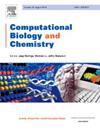基于深度特征识别的克罗恩病预测。
IF 2.6
4区 生物学
Q2 BIOLOGY
引用次数: 0
摘要
背景:克罗恩病是一种复杂的遗传性疾病,涉及慢性胃肠道炎症,由一系列复杂的遗传、环境和免疫因素引起。通过分析人类微生物组的数据,可以利用遗传信息来预测克罗恩病。深度学习的最新进展证明了其在特征提取和利用深度学习解码遗传信息进行疾病预测方面的有效性:在本文中,我们提出了一种基于深度学习的模型,该模型利用连续卷积注意力网络(SCAN)进行特征提取,结合自适应加法区间损失来增强这些特征,并采用支持向量机(SVM)进行分类。为了应对克罗恩病样本不平衡的挑战,我们提出了一种随机噪声单次编码数据增强方法:结果:随机噪声数据增强加速了训练收敛,而 SCAN-SVM 能有效提取特征,自适应加法区间损失增强了区分度。我们的方法优于基准方法,实现了 0.80 的平均准确率和 0.76 的卡帕值,并验证了特征增强的有效性:综上所述,我们利用深度特征识别有效地分析了基因中的潜在信息,在克罗恩病的基因分析和预测方面具有良好的应用前景。本文章由计算机程序翻译,如有差异,请以英文原文为准。
Prediction of Crohn's disease based on deep feature recognition
Background
Crohn's disease is a complex genetic disease that involves chronic gastrointestinal inflammation and results from a complex set of genetic, environmental, and immunological factors. By analyzing data from the human microbiome, genetic information can be used to predict Crohn's disease. Recent advances in deep learning have demonstrated its effectiveness in feature extraction and the use of deep learning to decode genetic information for disease prediction.
Methods
In this paper, we present a deep learning-based model that utilizes a sequential convolutional attention network (SCAN) for feature extraction, incorporates adaptive additive interval losses to enhance these features, and employs support vector machines (SVM) for classification. To address the challenge of unbalanced Crohn's disease samples, we propose a random noise one-hot encoding data augmentation method.
Results
Data augmentation with random noise accelerates training convergence, while SCAN-SVM effectively extracts features with adaptive additive interval loss enhancing differentiation. Our approach outperforms benchmark methods, achieving an average accuracy of 0.80 and a kappa value of 0.76, and we validate the effectiveness of feature enhancement.
Conclusions
In summary, we use deep feature recognition to effectively analyze the potential information in genes, which has a good application potential for gene analysis and prediction of Crohn's disease.
求助全文
通过发布文献求助,成功后即可免费获取论文全文。
去求助
来源期刊

Computational Biology and Chemistry
生物-计算机:跨学科应用
CiteScore
6.10
自引率
3.20%
发文量
142
审稿时长
24 days
期刊介绍:
Computational Biology and Chemistry publishes original research papers and review articles in all areas of computational life sciences. High quality research contributions with a major computational component in the areas of nucleic acid and protein sequence research, molecular evolution, molecular genetics (functional genomics and proteomics), theory and practice of either biology-specific or chemical-biology-specific modeling, and structural biology of nucleic acids and proteins are particularly welcome. Exceptionally high quality research work in bioinformatics, systems biology, ecology, computational pharmacology, metabolism, biomedical engineering, epidemiology, and statistical genetics will also be considered.
Given their inherent uncertainty, protein modeling and molecular docking studies should be thoroughly validated. In the absence of experimental results for validation, the use of molecular dynamics simulations along with detailed free energy calculations, for example, should be used as complementary techniques to support the major conclusions. Submissions of premature modeling exercises without additional biological insights will not be considered.
Review articles will generally be commissioned by the editors and should not be submitted to the journal without explicit invitation. However prospective authors are welcome to send a brief (one to three pages) synopsis, which will be evaluated by the editors.
 求助内容:
求助内容: 应助结果提醒方式:
应助结果提醒方式:


